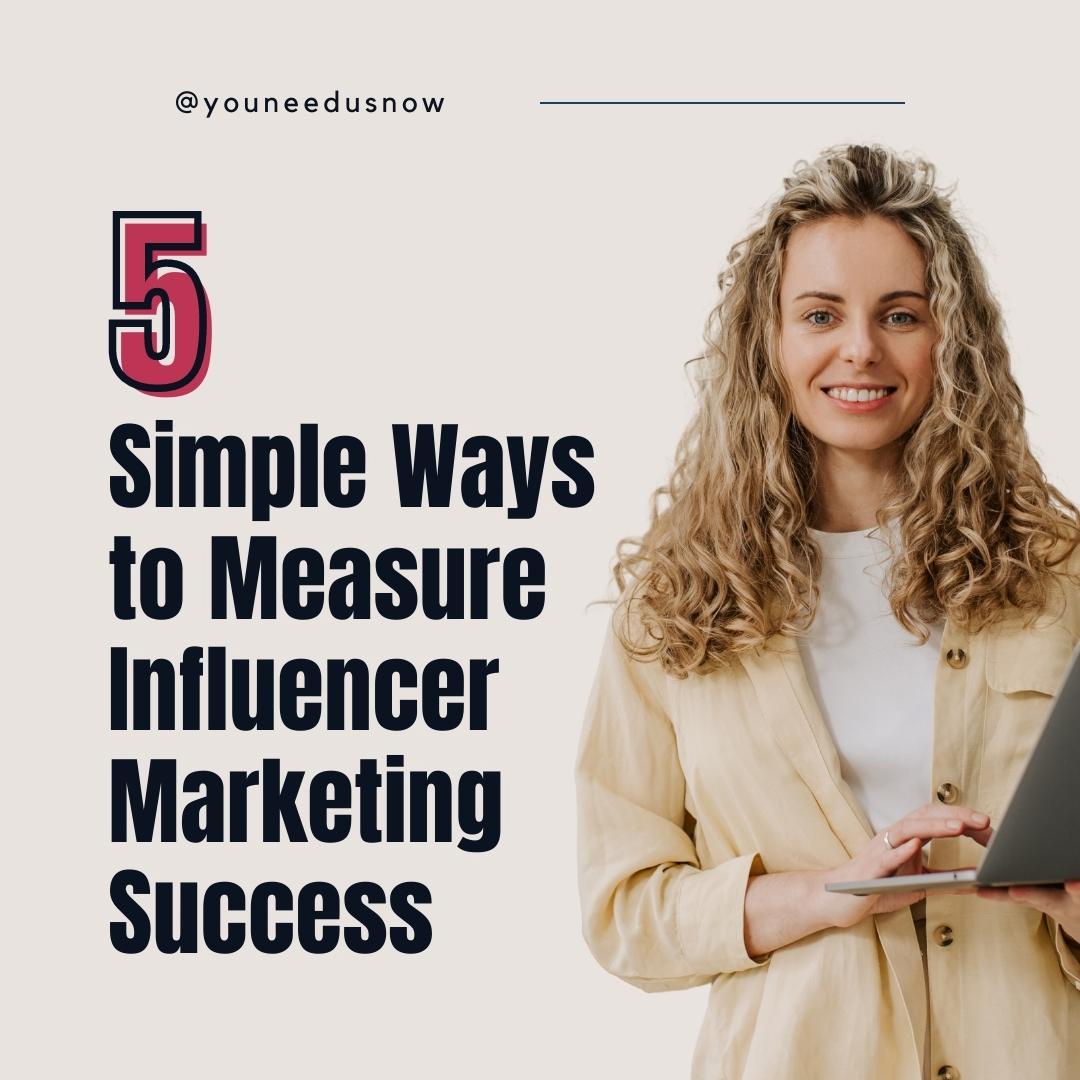Are you a small business owner looking for an effective way to market your product or service? Working with micro-influencers may be the perfect solution. Do micro-influencer work? This relatively new form of digital marketing allows businesses of all sizes to quickly reach their target audience and get their message out cost-effectively. As such, it can provide an invaluable boost to your bottom line if implemented correctly. Whether you’re just getting started with influencer marketing or are eager to maximize returns on your existing efforts, this blog post will provide all the essential information about micro-influencers, including how they work, why they are so effective, and tips on finding success. So come along and join us as we explore why micro-influencer marketing is one of today’s most powerful – and potentially lucrative – forms of digital promotion!
What is a micro-influencer?
Micro-influencer marketing involves leveraging the influence of micro-influencers to create awareness and engagement around a product or service. Micro-influencers typically have between 10,000 and 100,000 followers on social media channels and are respected by their fans as authorities in their respective niches. By leveraging micro-influencers, businesses can tap into their audiences and gain access to potential customers who trust the micro-influencers opinion. Micro-influencer marketing typically costs less than mega-influencers or celebrity influencers, making them an attractive option for small businesses with limited budgets. Additionally, micro-influencers often have a deep understanding of their niche, which allows them to create more authentic content, resulting in higher engagement rates for the business. We will discuss micro-influencer marketing in more detail below.
Influencer comparison: Nano-, Micro-, Macro-, Mega-, Celebrity- Influencers
Nano-influencers
Followers: 1,000 – 10,000
Reach: 2 out of 5
Engagement rate: 5 out of 5
Cost to Acess: 1 out of 5
Micro-influencers
Followers: 10,000 – 100,000
Reach: 3 out of 5
Engagement rate: 4 out of 5
Cost to Acess: 2 out of 5
Macro-influencers
Followers: 100,000 – 1,000,000
Reach: 4 out of 5
Engagement rate: 3 out of 5
Cost to Acess: 4 out of 5
Mega-/Celebrity-influencers
Followers: 1,000,000+
Reach: 5 out of 5
Engagement rate: 2 out of 5
Cost to Acess: 5 out of 5
Nano influencers are social media users with follower counts between 1,000 and 10,000. They have the highest engagement rate but the least reach out of all influencer types. As such, nano-influencers are best for businesses looking to target micro-niches.
Micro-influencers have followers between 10,000 and 100,000. They offer a good balance between reach and engagement rate while still being cost-effective. Thus they are ideal for brands trying to target larger niches that require more exposure than micro-niches can provide.
Macro influencers boast follower counts up to one million. They have a larger following, but their engagement rate is slightly lower than micro or nano influencers. As a result, they are best for campaigns targeting larger audiences with more resources available to invest in influencer marketing.
Mega influencers (aka Celebrity influencers) have the highest reach of one million plus followers. However, mega-influencers tend to have the lowest engagement rate due to their large follower counts and lack of personal connection with fans. They can be a great choice if you want your message quickly reaching millions, but they may not be the right influencer for micro-businesses that don’t have hundreds of thousands or millions to spend on campaigns.
Why are Micro-Influencers so Effective for Small Businesses?
When it comes to micro-influencer marketing campaigns, small businesses are uniquely positioned to benefit from their effectiveness. Unlike large brands, micro-influencers have stronger relationships with their audience and can create more authentic content. This gives small businesses an opportunity to stand out from the competition by creating engaging content that resonates with followers in a meaningful way and reducing content production costs by repurposing user-generated content.
In addition, micro-influencers tend to be more cost-effective than macro-influencers or mega-influencers since micro-influencers usually require less compensation for their services. This makes micro-influencer marketing a great option if you are on a tight budget but still want to get the most out of your digital promotion efforts.
Furthermore, smaller niche influencers often have more specialized knowledge and can provide expert advice on various topics. This means micro-influencers can be valuable sources of information for small businesses, allowing them to not only reach more potential customers but also educate their audience on the benefits of their product or service.
Overall, micro-influencer marketing campaigns are an effective way for small businesses to increase brand awareness, drive sales, and build customer relationships. By working with micro-influencers, small businesses can tap into audiences they wouldn’t otherwise have access to while keeping costs low.
How to find micro-influencers?
Finding micro-influencers for your business can be difficult, but there are several resources available that can help simplify the process of finding the right influencers with quality content and healthy engagement rates.
One of the most traditional methods for finding micro-influencers is to use the built-in messaging feature on social media platforms. Search relevant keywords, hashtags, and interests in potential micro-influencers bios to ensure they are a good fit for your business. Once you have identified micro-influencers that may be a good match, contact them via direct message or email to further discuss the collaboration opportunity, such as the logistic, compensation, and duration of the collaboration.
Another great option is to use an influencer marketing platform such as YNUN (You Need Us Now). YNUN influencer marketing platform specializes in mobilizing micro-influencers in local areas to promote brick-and-mortar businesses. With access to pre-vetted micro-influencers in various niches, YNUN can help you quickly review micro-influencer profiles and find the best match for your business. Having micro-influencers on board is an incredibly effective way to get the word out about your business and generate interest in what you have to offer.
By taking the time to research micro-influencers through traditional methods or influencer marketing hubs such as YNUN (You Need Us Now), small businesses can greatly benefit from influencer marketing. Influencers can be powerful ambassadors for your business. When used correctly, micro-influencer marketing can help you tap into a large audience of potential customers and expand your social media presence and social proof.
Tips for Finding Success with Micro-Influencers on Instagram
When it comes to social media influencers, Instagram is one of the best platforms for finding success. With over 2 billion active Instagram users, businesses can easily tap into influencers’ massive followings and leverage the personal relationship they have built with their audiences.
Although micro-influencers have a smaller audience compared to mega-influencers, they often build online communities around niche audiences. That said, each brand may have its own set of criteria to define micro-influencers who will be beneficial to the brand.
So, how do you find micro-influencers who can effectively promote your business on Instagram?
Here are some tips to help you get started:
1. Determine how to grow your business
Define your overall marketing goals and strategy before you dive into influencer marketing. It’s important to have a clear goal in mind of what you want to achieve and a way to measure that success. First, determine your overall goals and how you want to improve your business. Then, figure out how to leverage influencers’ reach and niche authority to reach your goals. For instance, if you’re looking to drive more revenue, you may want to run a promotion such as “buy x get Y free” to get your customers to buy more per transaction by incentivizing them with a free bonus. If you are trying to build brand awareness, you may want to work with micro-influencers for a joined giveaway to get your brand name out there as the initial brand introductory.
2. Identify micro-influencers who fit your objectives
Spend some time determining what kinds of influencers can help with your campaign. First, figure out who your niche audiences are and what they have in common. Then, figure out who they interact with the most online to get suggestions. It is crucial to know who you are going after and who can reach them and put in a good word for you.
For instance, if you are a new restaurant, you may want to find local foodies to share their authentic reviews with their fellow local foodies to build up your social proof. And if you are a more established restaurant, you may want to find influencers who are local non-foodies to expand your brand awareness with more people who can physically patronize your restaurant.
3. Determine incentives to promote your product or service
Make sure you offer fair compensation to ensure your initiative’s success. It’s important to offer influencers the appropriate compensation, whether a monetary fee or free products and services. After all, influencers work hard to promote your business, and you want to show them some appreciation for long-term success and potentially turn them into brand ambassadors.
In contrast to mega-influencers with celebrity status and millions of followers, micro-influencers tend to have a more targeted fan base and are less expensive to work with.
Influencers are getting paid differently due to certain factors like their niche, number of followers, social media channel, campaign type and length, and performance. Here are a few things to consider when determining the reward for your campaign:
- The influencer’s reach and engagement
- The channel they use (e.g., Instagram, YouTube, Blog, etc.)
- How many posts do you want, and if they include images, videos, or audio
- How much effort will require from the influencer
- Where should the ad be promoted and/or cross-posted
The industry average reward is as follows:
- 1000 – 10,000 followers: $10 – $100 per post
- 10,000 – 50,000 followers: $100 – $500 per post
- 50,000 – 500,000 followers: $500 – $5,000 per post
- 500,000 – 1,000,000 followers: $5000 – $10,000 per post
- 1,000,000+ followers: $10,000+ per post
4. Determine CTA for even better results
To get better-desired results, it is crucial to add a Call-to-Action to all the sponsored posts. A call-to-action is a short phrase statement that provokes an immediate response or encourages immediate action. CTA prompts the reader to take action, such as “click here” or “sign up now.” It is an effective way to drive traffic for awareness and convert micro-influencers followers with their recommendation and stamp of approval.
In addition to adding a call-to-action to sponsored content, it is essential that you have an effective method of capturing and nurturing the leads from micro-influencers. This could include engaging with them on your Instagram feed or having them sign up for a newsletter so you can provide more information about your product or service while enticing them with personalized offers. Having a way to follow up with micro influencers’ followers in the future will help you maximize your ROI from micro-influencer marketing and ensure that your campaign is successful.
5. Create a Collab Request
Once you have determined how micro-influencers can assist your small business in reaching its goals, it is time to develop a collab request. This is an extensive job posting for micro-influencers to apply and should include information on who qualifies, what needs to be promoted and when, where the promotion should occur, why micro-influencers and their followers should be interested, and how rewards will be distributed. Doing this will ensure micro-influencers understand all the details as well as have a clear idea of what is expected from them, in turn resulting in better outcomes for your business. Utilizing micro-influencers can help you bridge the gap between customers and the goals of your business, making micro-influencers an integral component of any successful marketing strategy for small businesses.
6. Review and approve before posting
Before micro-influencers post anything about your business, you should review the content to ensure it is accurate and engaging. You can provide them with guidelines regarding what to post and how to present it in order to maintain brand consistency and make sure they are representing your business accurately.
Meanwhile, you want to ensure you give them creative freedom as they know best in terms of the content style and format their audiences prefer. The more relevant and engaging the content is to the audience, the more exposure you will get for your brand.
7. Follow up after posting
Keep track of micro-influencer posts and campaigns to ensure their success and desired outcomes. After posting, review the post engagements to gain insights into what people are saying, as well as which types of content perform better for different target audiences. To further boost a performing post, you can use ads to increase exposure and generate more conversions. Additionally, you can reuse the micro-influencer-generated content in other marketing channels for an integrated effect. This eliminates asset production costs and reduces the need for A/B testing to find effective ads.
8. Collab Post – Kill two birds with one stone
If you are just starting out or don’t have time to engage with your audience, setting up collab posts could be a great option for you. With collab posts, micro-influencers create content that will show up on both your and their social media feeds simultaneously. This method will save you the hassle of having to repost the content later and allow micro-influencers to share their traffic and engagement with you as your own. Plus, with Collab Posts, endorsements stay on your profile, making it easier for you to demonstrate all your social proof to visitors as they visit your page.
Conclusion
In conclusion, micro-influencer marketing can be a great way for small businesses to quickly and effectively reach their goals. Finding the right micro-influencers, offering fair compensation, adding effective calls-to-action, collaborating on posts, and reviewing content prior to posting are key steps in maximizing micro-influencer relationships and optimizing results. By leveraging micro-influencers, small businesses have the chance to increase brand awareness and obtain better results in a cost-effective way.
It is important to remember that micro-influencers are not just about follower count; content quality, reach and audience engagement are far more critical for a successful micro-influencer campaign. When done correctly, micro-influencer marketing can be a highly effective way to promote your business, no matter whether it is eCommerce or brick-and-mortar. With micro-influencers, small businesses have the opportunity to reach a larger audience and create stronger connections with their target customers. For those looking to grow their customer base and increase brand awareness, micro-influencer marketing can be a powerful tool. Utilizing micro-influencers can give your business the competitive edge it needs to succeed.




